Quick search
CTRL+K
Quick search
CTRL+K

Wismar is one of the historic North German Hanseatic cities, where you can see many old buildings in the so-called Brick Gothic architecture. The architecture is typical of the once prosperous cities of the Hanseatic League, and among other things, the three major churches radiate the atmosphere from the city’s economically thriving commercial history.
The churches of St. Georgen and St. Nikolai stand beautifully as the great old churches that are. The third of Wismar’s three mighty churches, the Marienkirche, was destroyed during World War II and is today it is only the church tower with the contours of the other buildings which remains. It provides an interesting perspective in the old center of the city.
Wismar was once one of Sweden’s most important cities in their North German possessions, and in Wismar the Swedes have made their greatest mark in the region, where not least the famous Swedish heads can be seen in the city and on the water on a harbor cruise. The Bay of Wismar and the harbor are added dimensions to a visit to the Hanseatic city.
There are many interesting places to see around the city. Wismar is a good starting point for trips to other Hanseatic cities such as Lübeck and Rostock. There is great nature as well, and an excursion to the German Baltic Sea coast is a good choice. Towns like Heiligendamm and Kühlungsborn are examples of fashionable seaside resorts close by.
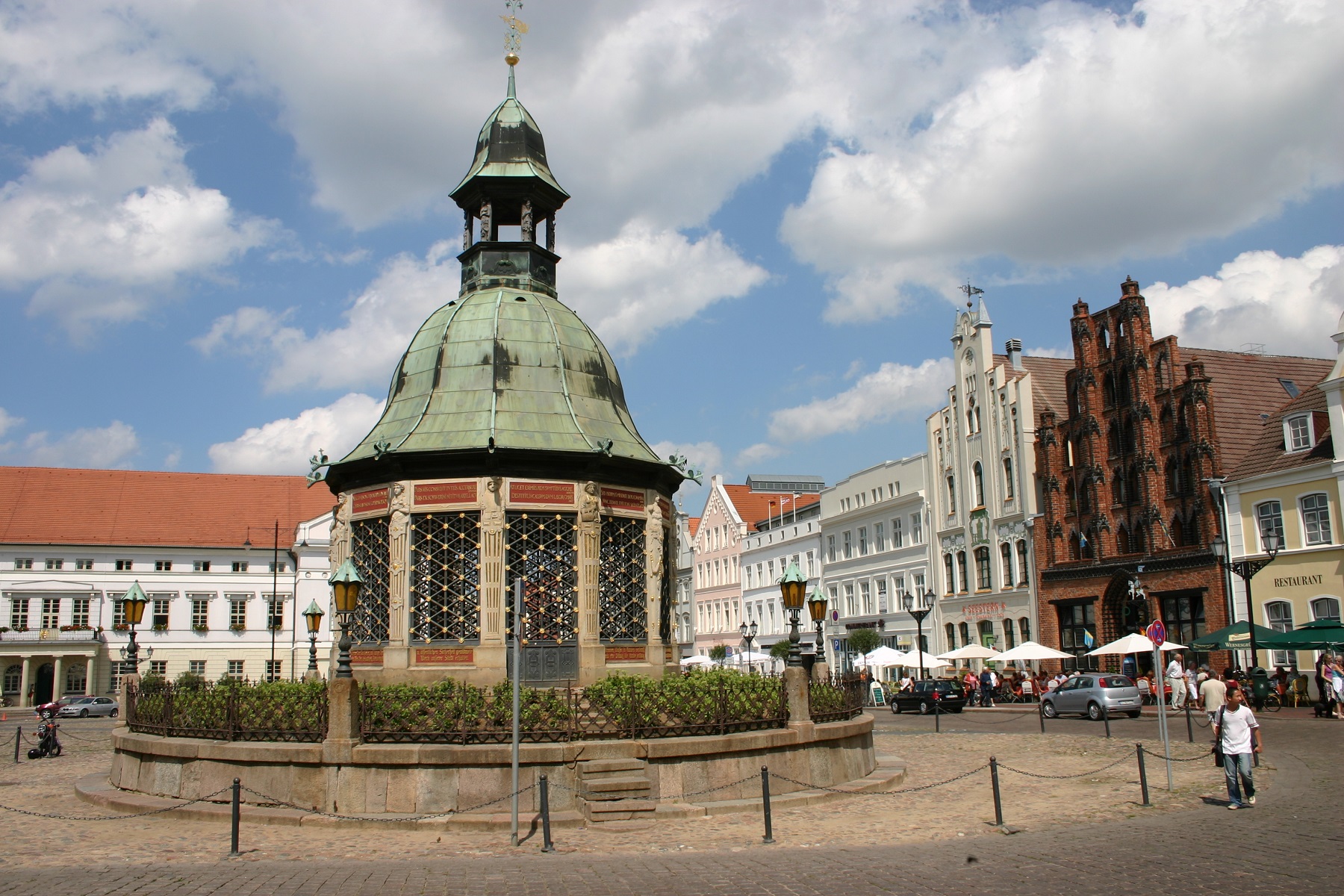
Wismar’s market place is one of the largest in Northern Germany, and it is surrounded by old, beautiful buildings, among which the gabled houses are typical of the Hanseatic cities. During the season, it is very lively with outdoor dining and the city’s business district just a few meters from here.
The city’s beautiful town hall dominates the square, and in the southeast corner of the Markt is a large well building, Wasserkunst, built by the Dutchman Philipp Brandin in 1602 in the Dutch Renaissance. The well supplied Wismar’s citizens with drinking water until 1897.
The street named Am Lohberg is one of the nicest in the center of Wismar. With the location close to the old harbour, one can think back to the area’s historic heyday, when trade flourished from here.
In Lohberg there is a brewery from 1452; Brauhaus am Lohberg. After a break, beer has been brewed here again since 1995, and it fits in well with the outdoor life of the street scene with several restaurants.
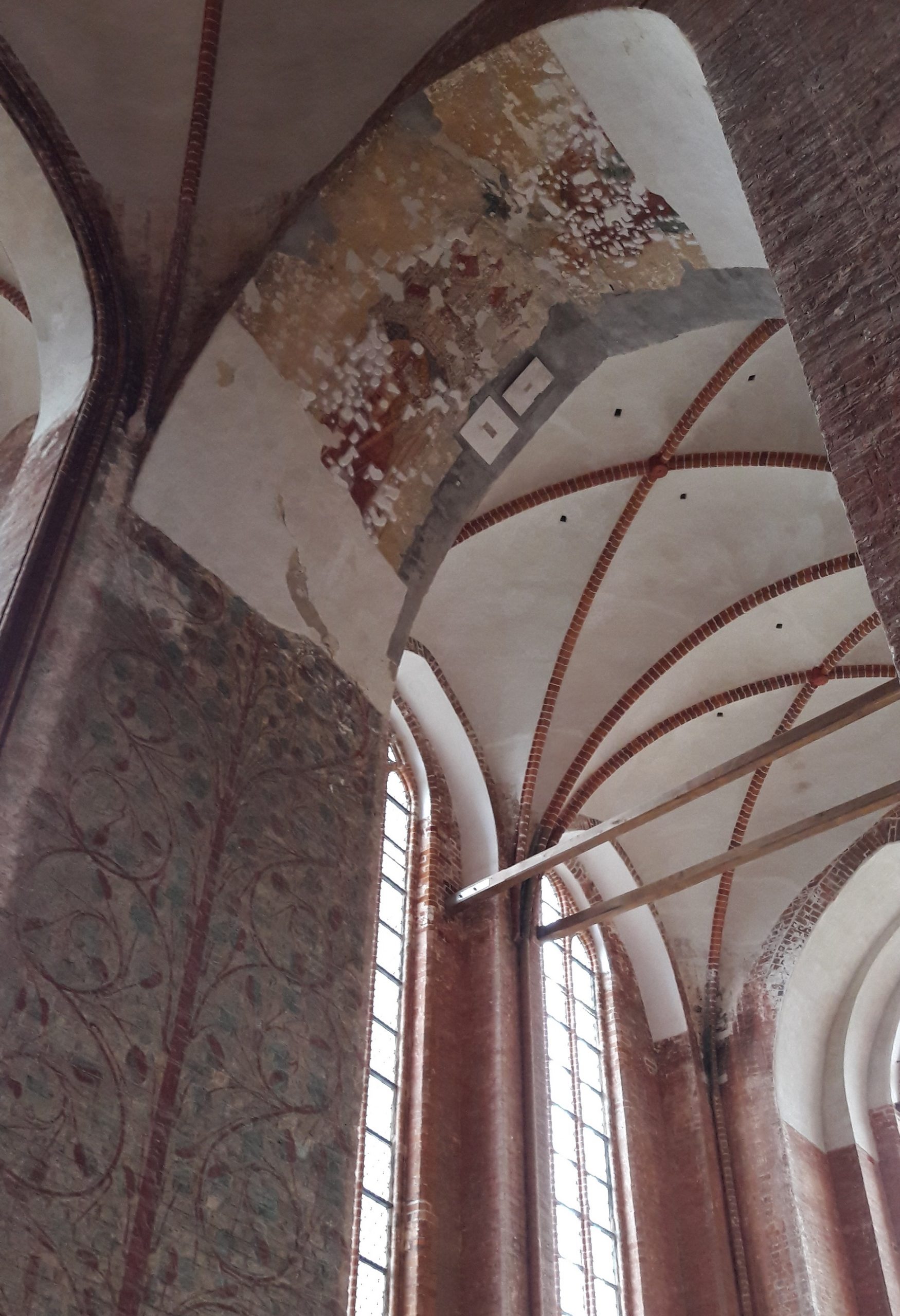
St.-Georgen-Kirche is the southwesternmost of Wismar’s three large church buildings, and the church is a beautiful example of North German brick construction.
Construction started around 1260, but through a number of alterations and extensions, construction lasted until 1594, when the impressive church was completed. St.-Georgen never got a flashy tower that could match the rest of the building, which was due to a lack of funds in the 16th century.
During the Second World War, St.-Georgen-Kirche was bombed into a majestic ruin, which remained largely untouched until 1990, when the reconstruction work started. In both its exterior and interior, St.-Georgen has now regained its original appearance to the delight of the city’s citizens and the many visitors.
The house Schabbellhaus was built 1569-1571 by the Dutch architect Philipp Brandin. It was for the councilor and later mayor, Hinrich Schabbell, who had originally set up the town as a merchant’s farm and brewery.
Today, Wismar’s city history museum is housed in the Schabbellhaus. The museum mainly deals with the periods when the city was part of the Hanseatic League and under Sweden. Among the effects, you can see the only one preserved of the original Swedish heads, which were and are among Wismar’s landmarks.
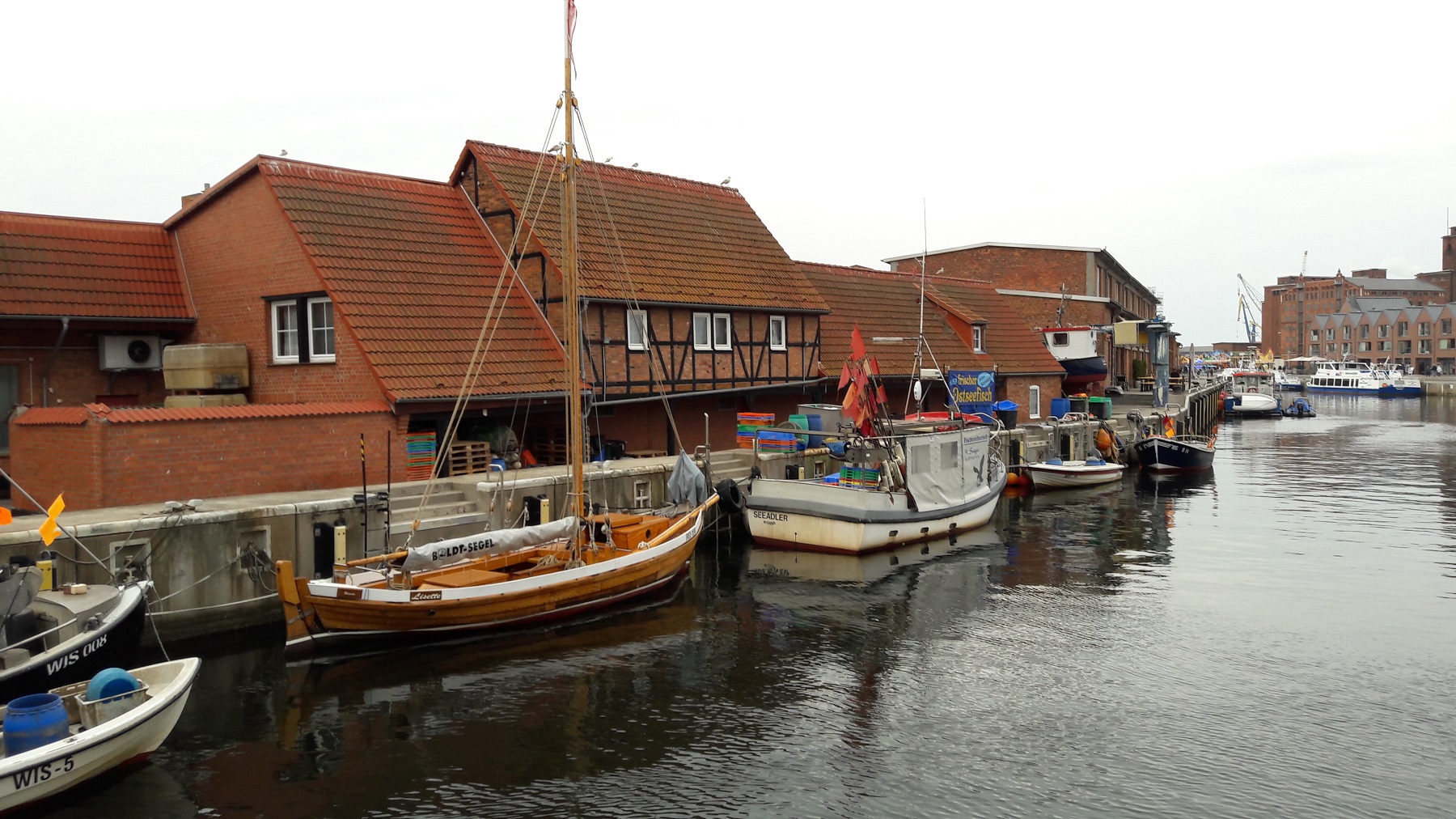
Wismar’s location by the sea and with natural protection in the form of the bay Wismarer Bucht already made Wismar an ideal trading post from the beginning of the city. The harbor naturally had a central role, and the Old Harbor is today a glimpse of the time during the Hanseatic League.
Today there are yachts and fishing boats in the harbour, and from here you can also go on a harbor cruise in the large modern harbor and to Wismar Bay. At the quay to the north-east of the Old Harbour, you can see the house Baumhaus, which dates from the 18th century and was the place from which chains were pulled to close the harbor at night. Outside the Baumhaus you can see two of the city’s well-known Swedish heads.
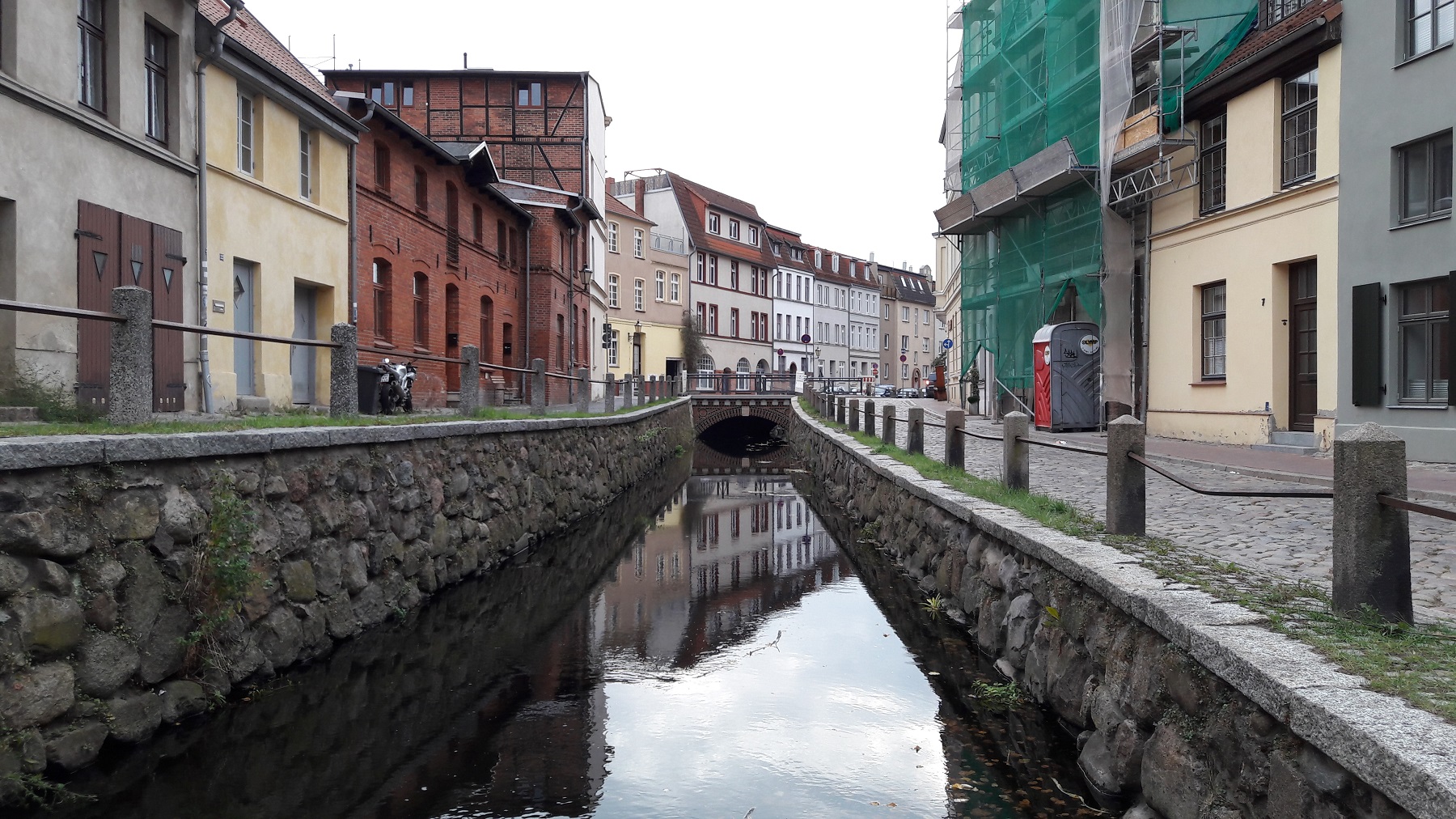
Frische Grube is one of Wismar’s oldest streets. It is named after the artificially run-up stream in the middle; Grube, which connected the town’s mill pond, Mühlenteich, with the harbor and the Baltic Sea.
The construction of the stream was carried out in the 13th century, and the water was used for various purposes; e.g. as a reservoir, transport and for washing. Today, the water and the street create an atmospheric atmosphere in the city’s old town.
Saint Nicholas Church is considered a late Gothic masterpiece in the region. The three-aisled church was built as the fishermen’s and sailors’ church in the years 1381-1487. The tower is 64 meters high, but originally it was 120 meters. In 1703, the peak collapsed during a storm. Part of the top fell through the roof of the church, and it was not until 1867 that the church was completely rebuilt after its destruction.
Inside, the church appears Gothic in structure with 37 meters to the vaulted ceiling. The interior is for the most part from the Baroque period, and many of the beautiful elements have come over time from other churches in the city or during construction after 1703.
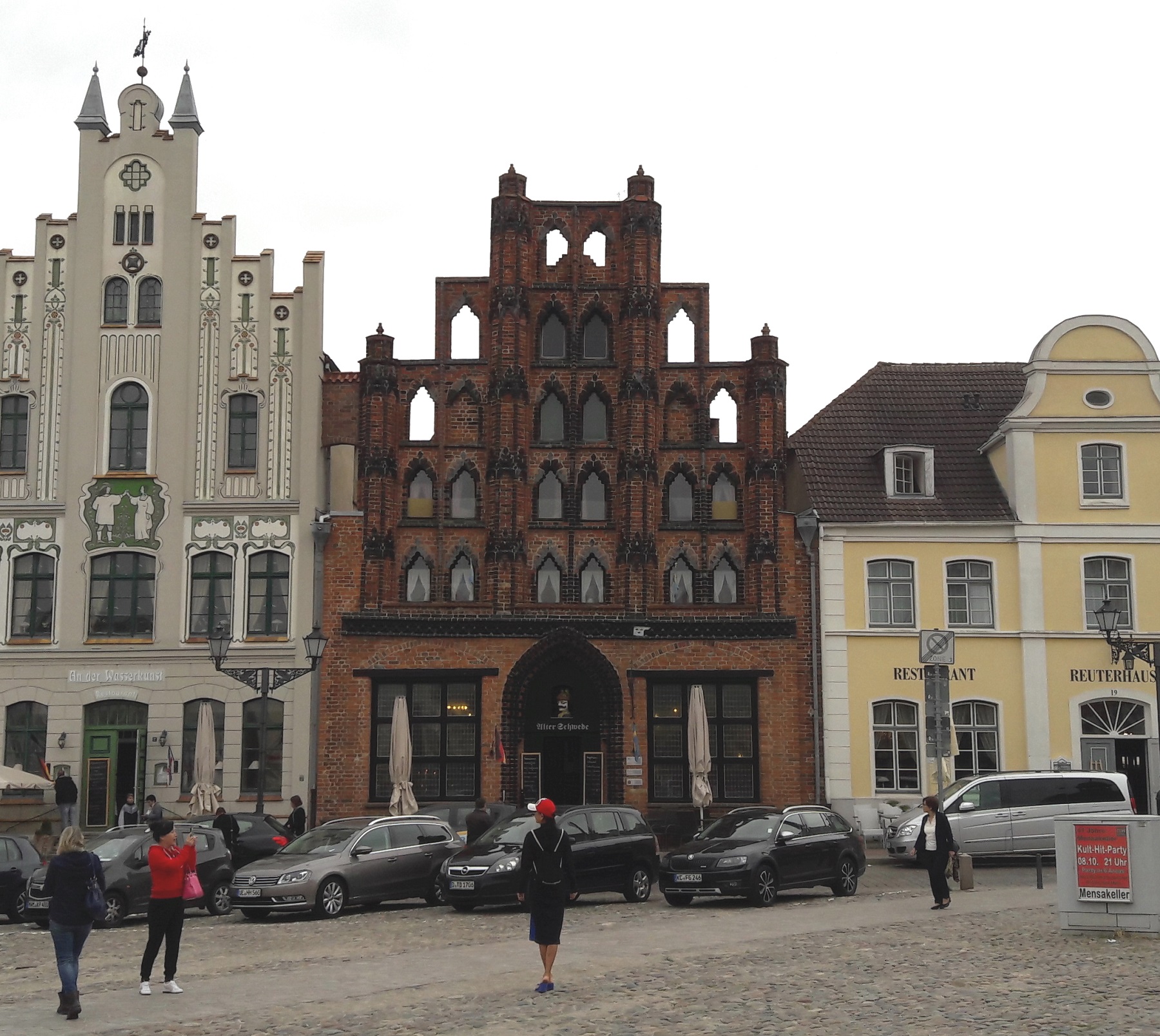
The brick Gothic building with the name Alter Schwede stands on Markt square opposite the square’s well building to the east. Alter Schwede means “the old Swede”, and the house was built in 1380, making it the oldest building on the square.
It was not until 1878 that the building was fitted out as a tractor shed, and on that occasion it was given the name Alter Schwede, named after Wismar’s Swedish time, which lasted 1603-1848.
The Water Gate is Wismar’s old city gate towards the harbor. It was built in the so-called Brick Gothic, and the gate is the last preserved one of the original five gates in the city’s defensive wall. The gate was built in 1450.
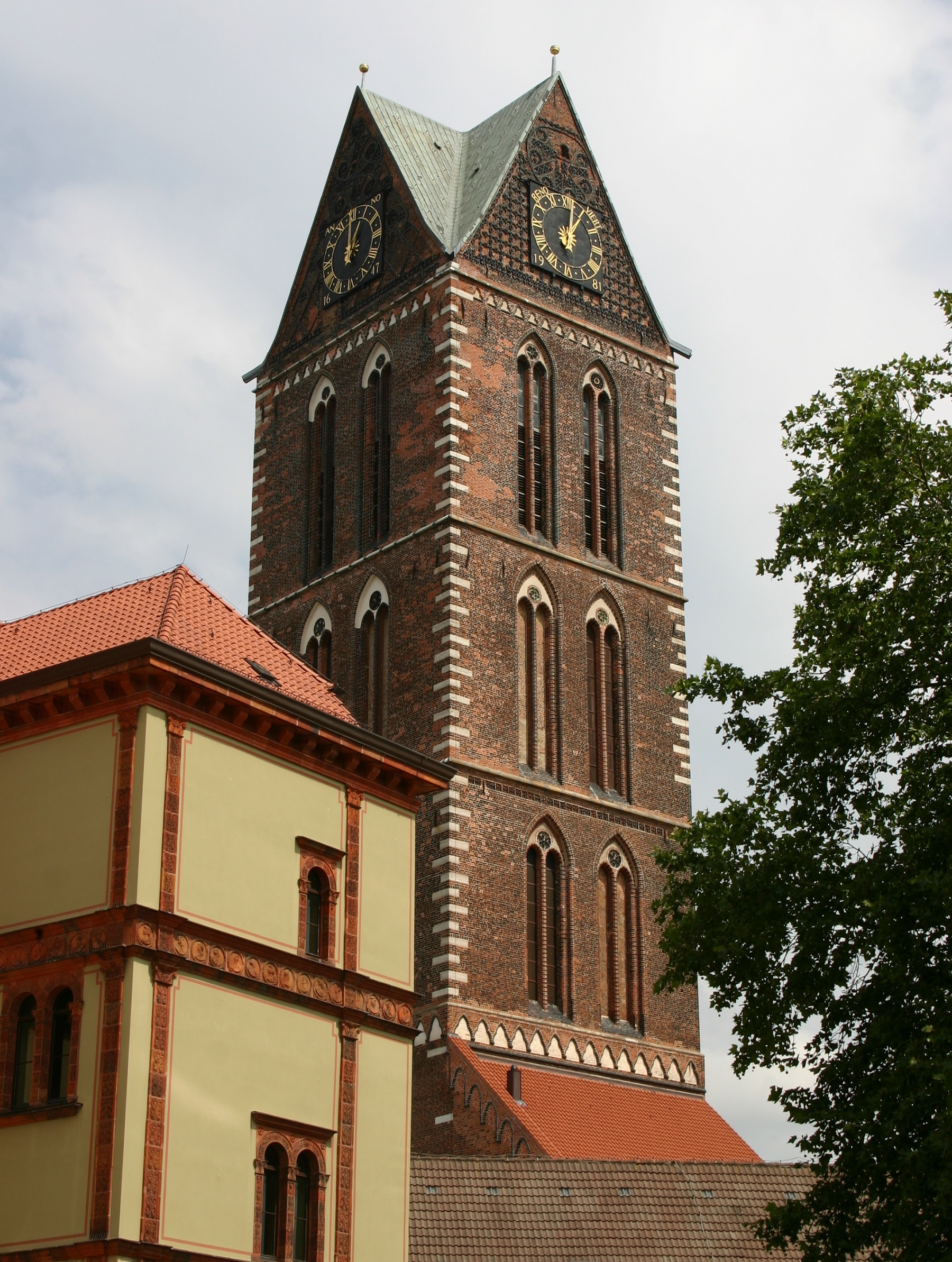
The tower Marienkirchturm is all that remains today of the once mighty Marienkirche. Marienkirche was known as one of Northern Germany’s finest brick buildings, but after extensive damage caused during World War II, the church, with the exception of the tower, was blown up in 1960.
Marienkirche is believed to have been built only in the first half of the 13th century, only to be replaced around 100 years later by the church twice as large, which thus met its end in 1960.
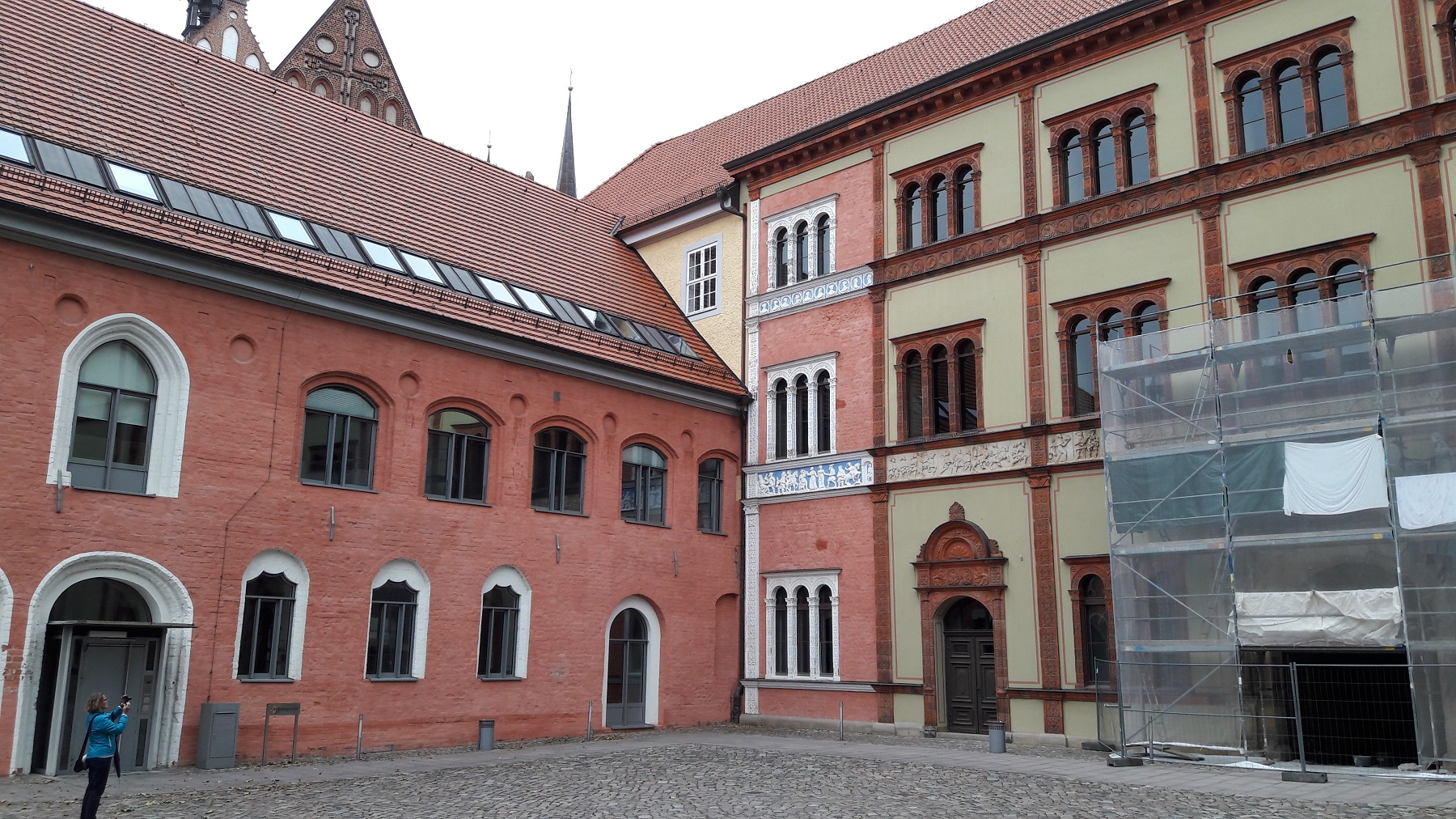
The Fürstenhof was the seat of the Dukes of Mecklenburg and the complex consists of two parts. There is the western part from 1512-1513, which is called the “Alte Haus” and is based on the late Gothic style, and there is the “Neue Haus” from 1553-1555, which was built in elegant Italian Renaissance style. The exterior decoration is in limestone and terracotta, where the floors are separated by figure friezes.
When Wismar became Swedish in 1648, Fürstenhof was arranged to house the Tribunal, which was the highest Swedish judicial authority in the Swedish possessions in Northern Germany. Today, the Fürstenhof is the court of the Wismar region.
Lindengarten is a small park immediately adjacent to Wismar’s old town. In the park stands an old water tower, the Alter Wasserturm, which was built as a defense tower in part of the city’s old city wall. The garden is a popular recreational area that complements the city’s harbor as a good place for a stroll.
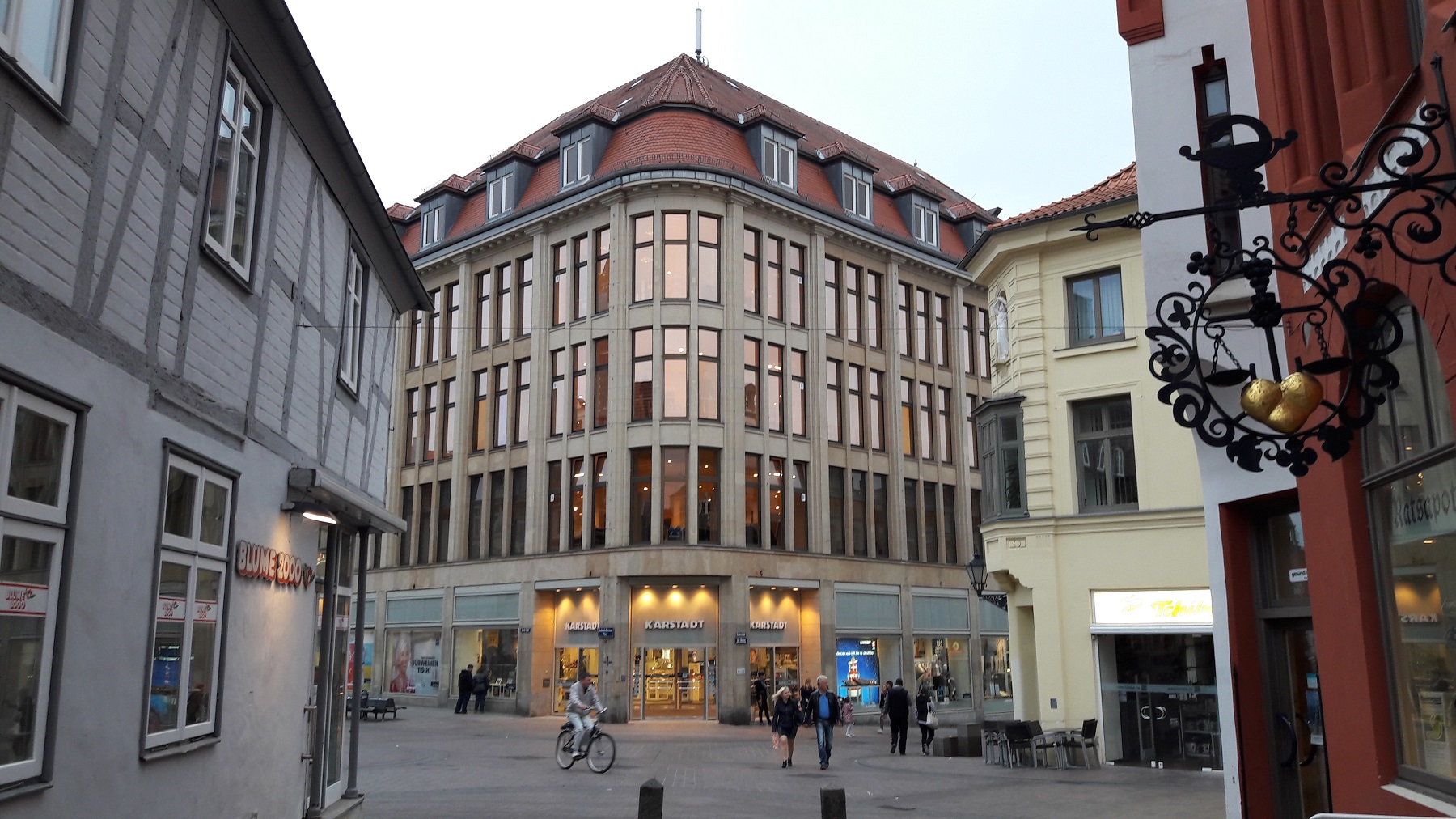
Here in the middle of Wismar’s pedestrian streets lies the beginning of a chapter in German retail history. In 1881, Rudolph Karstadt founded his first store in what has now developed into an empire of department stores in most major German cities.
In 1881, Karstadt opened its doors with only one employee. The current four-storey department store building was built in the Art Nouveau style and is curiously located in Krämerstraße, which means merchant’s street.
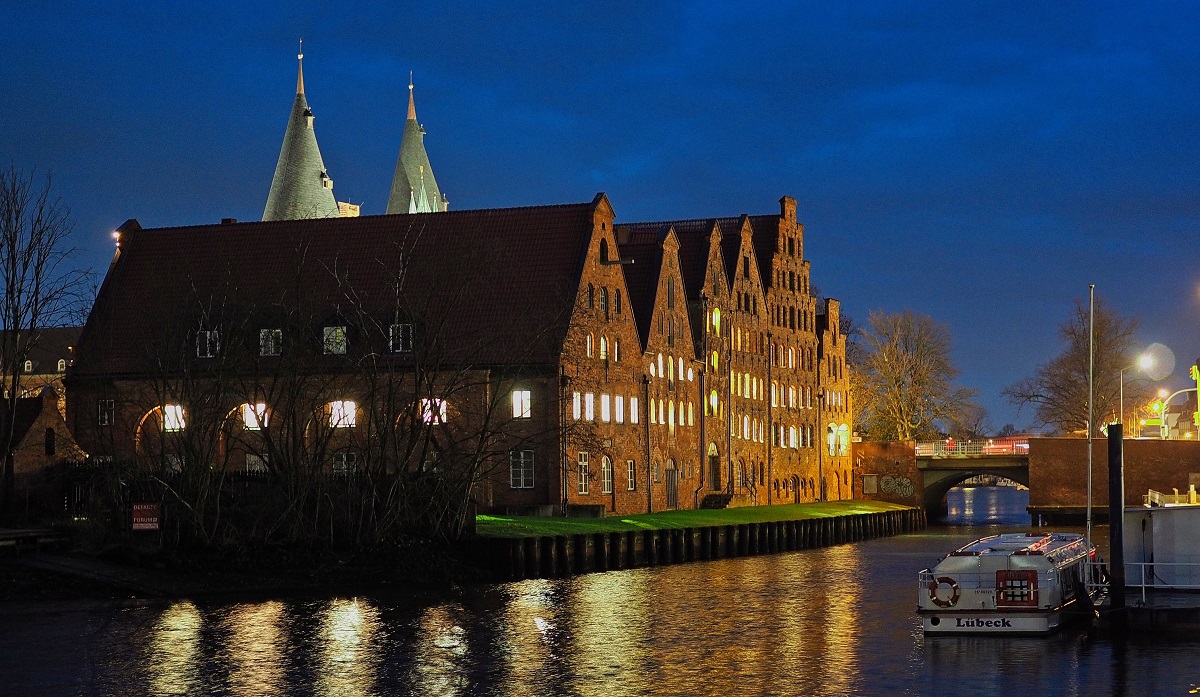
Lübeck was the queen of the Baltic Sea Region’s Hanseatic cities. It still is, and that is not without reason. Majestic churches and countless houses, monasteries and other medieval buildings stand as evidence of the immense wealth that came to the city over the centuries with trade routes.
The old town of Lübeck is located on an island in the Trave River, which provides a natural boundary for this part of the city where everything is within walking distance. In addition, the river and its banks are like a blue-green belt around the city, which can be enjoyed in many places, for example on a river boat, where you sail the Trave around the center of Lübeck.
Güstrow is a city in Mecklenburg-Western Pomerania with a city center worth seeing that has been built up through centuries of exciting development. Today, the city is known for, among other things, its Renaissance castle, which stands on the site where a Wendish castle was already built in 1219.
Today’s castle in Güstrow was built from 1558 by Duke Ulrich of Mecklenburg. The time was in the Renaissance, and in terms of style, the castle is an interesting mix of German, French and Italian architecture. In the middle of the 17th century, the last duke of Güstrow had the castle modernized with the baroque gatehouse and the castle bridge that leads from the gatehouse to the castle. Today the castle is set up as a museum, and below the beautiful building you can take a walk in the castle’s impressive garden.
In addition to the castle, there are many other sights in Güstrow, where you can take a short walk in the old town. Here you will find, among other things, Markedet/Markt, where the city’s elegant town hall is located. Just behind the town hall you can visit Our Lady Parish Church/Pfarrkirche St. Marien, which in its original version was consecrated in 1308.
Not far from Market and St. Marie is the Güstrow Domkirke/Güstrower Dom (Domplatz), which is an impressive church building in the typical North German brick Gothic style. The church was completed in 1335, and in addition to the building itself, Ernst Barlach’s famous sculpture Den Svævende/Der Schwebende can be seen here.
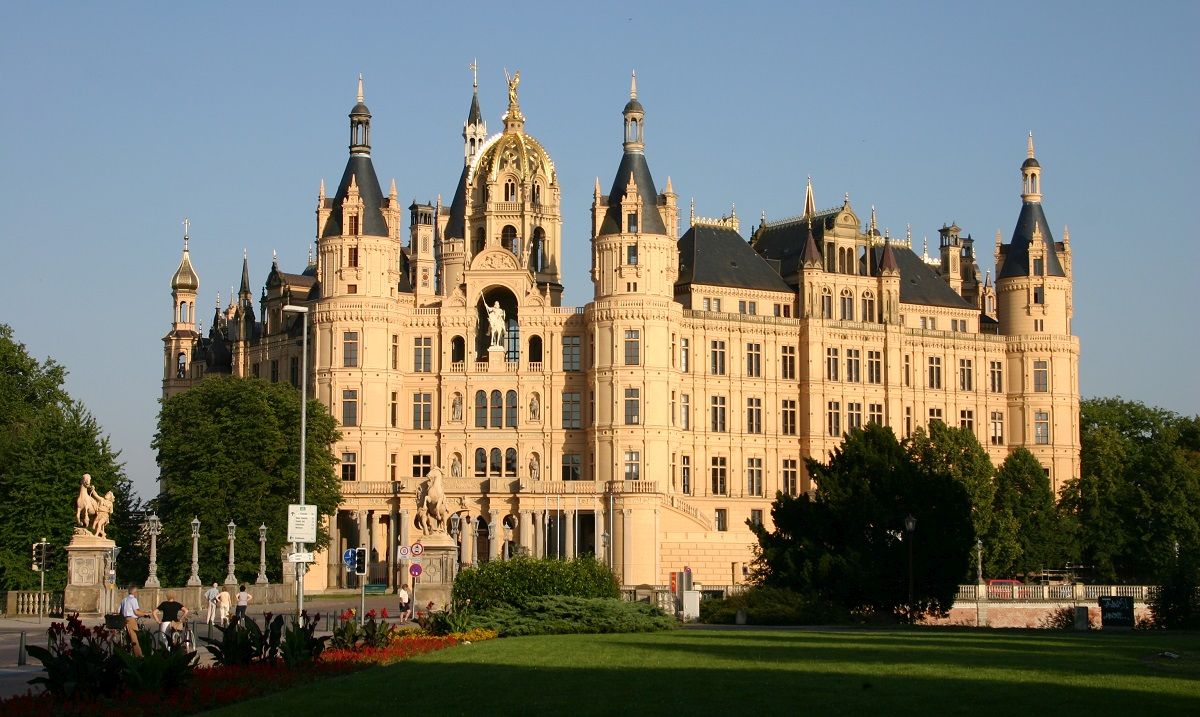
Schwerin is the capital of the state of Mecklenburg-Western Pomerania and the historic residence city of the dukes and grand dukes of Mecklenburg-Schwerin. It is the home to loads of elegant and magnificent buildings in the beautifully situated town on the lake Schweriner See, where you can enjoy various lovely lake cruises.
The most famous building is Schwerin Palace, which is a true fairy tale castle with its many towers and spiers. It is a must to visit during a tour of the city, but there are also many other large buildings within a pleasant walking distance. Along the way you can enjoy the fine pedestrian streets and squares located in the old town.

Rostock is one of the northern German cities, which grew with the Hanseatic League’s trade and financial success, and its historical wealth has been the source to a lot of constructions, that can be seen today as well. Large churches, the region’s oldest university and a lot of culture are some of the things you can look forward to in Rostock, which has also benefited from the investments of both former dukes and the GDR.
Rostock is a small metropolis with all that it entails. Business districts and shopping malls, good restaurants and a varied cityscape provide many choices of activities during a visit. A walk in the city center is the best way to explore the city where it is never far between sights.
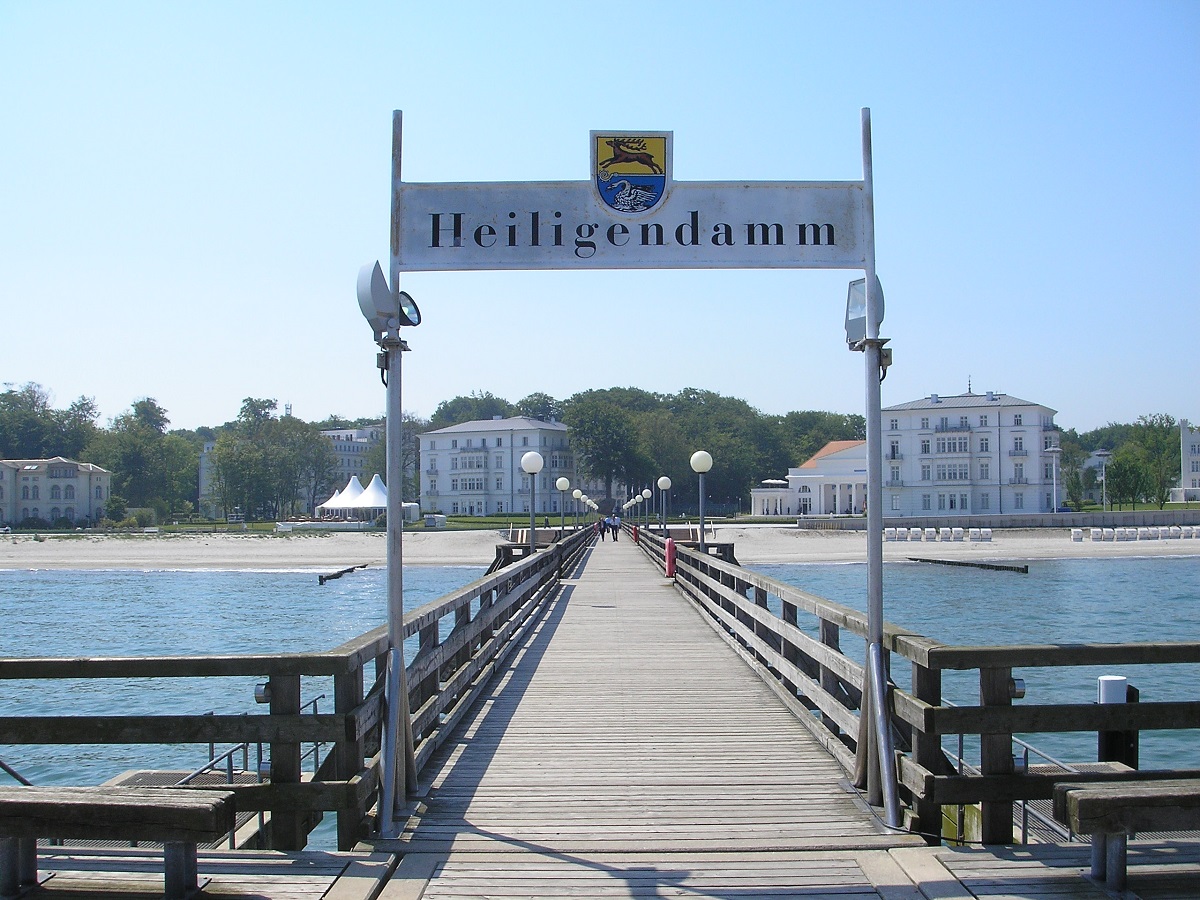
Heiligendamm is a spa town that was founded as such already in 1793. This makes it the oldest of its kind in Germany and continental Europe.
From its beginnings, Heiligendamm attracted distinguished guests. It was Friedrich Franz I who founded the city, and he was also the city’s first visitor. His visit made the place popular, which it still is.
In Heiligendamm you can enjoy the beaches and the beautiful spa buildings that surround the Grand Hotel Heiligendamm. The hotel is a complex of six elegant buildings built between 1793 and 1870.
The town of Kühlungsborn is at the end of the narrow-gauge Mollibahn, which runs from Bad Doberan via Heiligendamm on a scenic stretch that is worth the trip to Kühlungsborn in itself.
Kühlungsborn is a popular seaside resort with a lovely sandy beach as the center for many of the activities in the summer. Here you can take a walk out into the Baltic Sea on the city’s 240-metre-long pier, which, like a bathing bridge, starts from the city’s central area by the water.
A somewhat special attraction is the Baltic Sea border tower/ Ostsee-Grenztrum (Strandpromenade, Ostseeallee), which stands as one of the few preserved sea border towers that the GDR built in the early 1970s. In total, there were 27 of these towers, as they were active in monitoring the sea and, for example, escape attempts to what was then West Germany or Denmark.
Krämerstraße, Lübsche Straße
karstadt.de
Krämerstraße, Hinter dem Rathaus, Altwismarstraße
Tierpark Wismar
Am Tierpark 5
tierpark-wismar.de
Wonnemar
Bürgermeister-Haupt-Straße 3
wonnemar.de
Hafenrundfahrt
Am Hafen
reederei-clermont.de
Wismar’s prehistory was under the name of Reric, which was a Slavic or Saxon trading ground near the present city. The Danish king Godfred destroyed Reric in 808 and took the place’s merchants to Hedeby, which was the political center of Denmark at the time.
Reric’s good location on the Baltic Sea with natural protection of the Bay of Wismar made the place attractive, and a boatyard named Wismar appeared and was mentioned for the first time in 1147. From 1211 there is a document authorizing Schwerin’s inhabitants to use the port of Wismar, but this port exact location is unknown.
Today’s Wismar is believed to have been founded by the Mecklenburg Duke Henrich Borwin I in 1226, and not many years later, rights were introduced after Lübeck as an example. In the first decades, the settlements around Nikolaj Church and Maria Church grew together, and the city quickly expanded to what is today the center of the old town.
The trade flourished quickly for the well-located city on the Bay of Wismar, and in 1259 met, among others, envoys from Lübeck and Rostock in Wismar. They were to take steps against the increasing number of pirates, which posed a threat to the development of the northern German cities. The meeting was the start of establishing cooperation between the Vendean Hanseatic cities, which in the Middle Ages became important members of the Hanseatic League.
The population grew steadily, and around 1300 there were about 5,000 people living in Wismar. In 1350, the plague came to the city and about 2,000 inhabitants were affected.
The 1300-1500s became a time of both rise in city trade and internal strife. Thus, in the first half of the 1400s, there were political disputes, and after a defeat to Hansen’s navy against Denmark, naval commander Hinrich van Haren and Mayor Johann Bantzkow were executed in Wismar. The city had lost 12 ships to the Danish navy.
During the Thirty Years War, Wismar was occupied by Sweden in 1632. In the Westphalian Peace, entered into in the cities of Münster and Osnabrück in 1648, Wismar and considerable Pomeranian areas came under the Swedish crown. In 1653, Sweden established the supreme court in the country’s possessions on the south side of the Baltic Sea in Wismar.
During the Skåne War between Denmark and Sweden, Wismar was occupied by Denmark 1675-1680. After those years, the Swedes expanded Wismar with such extensive defense works that the city became one of the best-fortified shipping cities in Northern Europe. However, after Swedish defeat during the Great Nordic War in the early 18th century, the defense had to be shut down again.
The Swedish era was long overdue for the city, and it actually ended in 1803, when Sweden pledged the city to Mecklenburg-Schwerin for 99 years. At that time, about 6,000 lived in the city.
Throughout the 19th century, Wismar continued to develop as a trading town and the population numbered to around 20,000. In 1848 a railway line to Schwerin was opened and the network was continuously expanded over the following decades. In 1881, Rudolph Karstadt opened the store that would eventually become the Karstadt department store.
Between 1869 and 1904 the medieval city wall was demolished including gates and defense towers. The old defense system was thought to be a constraint to the city’s economic growth, and so Wismar was allowed to develop regardless of what had been the old city within the walls.
Like the rest of Germany, Wismar also became part of the Nazi regime of 1933 and later an active part of the war of 1939. Industries and the port were strategically important places in the city.
During World War II, Wismar was hit by twelve bomb attacks, which in total destroyed much of the old Gothic district; including two of the city’s three major churches. However, a special target was the Dornier aircraft factory in the port area. British and Canadian troops came to the city on May 2, 1945, and on July 1, they were replaced by the Red Army, and Wismar became part of the GDR for the following decades.
During the GDR, Wismar was expanded and the port became the country’s most important after Rostock Harbor. In 1990, Wismar regained its status of Hanseatic city, after which the city was officially named Hansestadt Wismar, which is reflected, for example, on the license plates of the city’s cars. Since then, the city core has undergone a restoration and partial reconstruction that has brought much of the city back to ancient glory to the delight of locals and visitors alike.
 Wismar, Germany[/caption]
Wismar, Germany[/caption]
Overview of Wismar
Wismar is one of the historic North German Hanseatic cities, where you can see many old buildings in the so-called Brick Gothic architecture. The architecture is typical of the once prosperous cities of the Hanseatic League, and among other things, the three major churches radiate the atmosphere from the city’s economically thriving commercial history.
The churches of St. Georgen and St. Nikolai stand beautifully as the great old churches that are. The third of Wismar’s three mighty churches, the Marienkirche, was destroyed during World War II and is today it is only the church tower with the contours of the other buildings which remains. It provides an interesting perspective in the old center of the city.
Wismar was once one of Sweden’s most important cities in their North German possessions, and in Wismar the Swedes have made their greatest mark in the region, where not least the famous Swedish heads can be seen in the city and on the water on a harbor cruise. The Bay of Wismar and the harbor are added dimensions to a visit to the Hanseatic city.
About the Whitehorse travel guide
Contents: Tours in the city + tours in the surrounding area
Published: Released soon
Author: Stig Albeck
Publisher: Vamados.com
Language: English
About the travel guide
The Whitehorse travel guide gives you an overview of the sights and activities of the Canadian city. Read about top sights and other sights, and get a tour guide with tour suggestions and detailed descriptions of all the city’s most important churches, monuments, mansions, museums, etc.
Whitehorse is waiting for you, and at vamados.com you can also find cheap flights and great deals on hotels for your trip. You just select your travel dates and then you get flight and accommodation suggestions in and around the city.
Read more about Whitehorse and Canada
Canada Travel Guide: https://vamados.com/canada
City tourism: https://visitwhite-horse.ca
Main Page: https://www.vamados.com/
Buy the travel guide
Click the “Add to Cart” button to purchase the travel guide. After that you will come to the payment, where you enter the purchase and payment information. Upon payment of the travel guide, you will immediately receive a receipt with a link to download your purchase. You can download the travel guide immediately or use the download link in the email later.
Use the travel guide
When you buy the travel guide to Whitehorse you get the book online so you can have it on your phone, tablet or computer – and of course you can choose to print it. Use the maps and tour suggestions and you will have a good and content-rich journey.


Frische Grube is one of Wismar’s oldest streets. It is named after the artificially run-up stream in the middle; Grube, which connected the town’s mill pond, Mühlenteich, with the harbor and the Baltic Sea.
The construction of the stream was carried out in the 13th century, and the water was used for various purposes; e.g. as a reservoir, transport and for washing. Today, the water and the street create an atmospheric atmosphere in the city’s old town.
Saint Nicholas Church is considered a late Gothic masterpiece in the region. The three-aisled church was built as the fishermen’s and sailors’ church in the years 1381-1487. The tower is 64 meters high, but originally it was 120 meters. In 1703, the peak collapsed during a storm. Part of the top fell through the roof of the church, and it was not until 1867 that the church was completely rebuilt after its destruction.
Inside, the church appears Gothic in structure with 37 meters to the vaulted ceiling. The interior is for the most part from the Baroque period, and many of the beautiful elements have come over time from other churches in the city or during construction after 1703.

The brick Gothic building with the name Alter Schwede stands on Markt square opposite the square’s well building to the east. Alter Schwede means “the old Swede”, and the house was built in 1380, making it the oldest building on the square.
It was not until 1878 that the building was fitted out as a tractor shed, and on that occasion it was given the name Alter Schwede, named after Wismar’s Swedish time, which lasted 1603-1848.
The Water Gate is Wismar’s old city gate towards the harbor. It was built in the so-called Brick Gothic, and the gate is the last preserved one of the original five gates in the city’s defensive wall. The gate was built in 1450.

The tower Marienkirchturm is all that remains today of the once mighty Marienkirche. Marienkirche was known as one of Northern Germany’s finest brick buildings, but after extensive damage caused during World War II, the church, with the exception of the tower, was blown up in 1960.
Marienkirche is believed to have been built only in the first half of the 13th century, only to be replaced around 100 years later by the church twice as large, which thus met its end in 1960.

The Fürstenhof was the seat of the Dukes of Mecklenburg and the complex consists of two parts. There is the western part from 1512-1513, which is called the “Alte Haus” and is based on the late Gothic style, and there is the “Neue Haus” from 1553-1555, which was built in elegant Italian Renaissance style. The exterior decoration is in limestone and terracotta, where the floors are separated by figure friezes.
When Wismar became Swedish in 1648, Fürstenhof was arranged to house the Tribunal, which was the highest Swedish judicial authority in the Swedish possessions in Northern Germany. Today, the Fürstenhof is the court of the Wismar region.
Lindengarten is a small park immediately adjacent to Wismar’s old town. In the park stands an old water tower, the Alter Wasserturm, which was built as a defense tower in part of the city’s old city wall. The garden is a popular recreational area that complements the city’s harbor as a good place for a stroll.

Here in the middle of Wismar’s pedestrian streets lies the beginning of a chapter in German retail history. In 1881, Rudolph Karstadt founded his first store in what has now developed into an empire of department stores in most major German cities.
In 1881, Karstadt opened its doors with only one employee. The current four-storey department store building was built in the Art Nouveau style and is curiously located in Krämerstraße, which means merchant’s street.
Similar to Wismar Travel Guide
